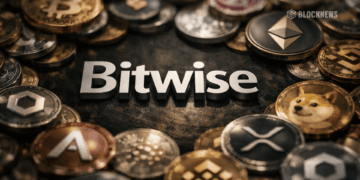Since the inception of the internet, which began in 1989, the internet and its users have seen significant changes between then and now. Like grades and descriptions of age generations (Boomers, Millennials, Generation X, and Generation Z), the World Wide Web (www) has also experienced extraordinary growth.
Web1.0, Web2.0, and Web3.0 are all stages at which the internet has evolved. Presently, everyone operates on Web2, although those who are tech-savvy and interested in the blockchain are already using Web3, even though it has a long way to go before it reaches its initial goal of artificial intelligence; a permissionless interaction on the internet.
Web1.0
Web1.0 is the start of the internet, spanning between 1989 to 2005; Web1.0 is the introduction to the world wide web. Created and controlled by a few companies and catered to a larger audience, Web1.0 was a read-only phase of the internet that dispersed information to the public without room for content creation, ads, or images.
Web1.0 shared information in the form of HTML and had very little user participation. It hosted static web pages with content that didn’t match users’ personalities or choices. It was expensive to use as the cost ranged from each page viewed on a computer system.
Web1.0 was rigid, and due to this, there weren’t many features it could serve the general public, aside from what the companies in control published, which was a distribution of information with no entertaining content for its audience.
Web2.0
Everyone in this modern age is familiar with Web2.0 and generally cannot do without performing activities on the internet. The term “World Wide Web” (www); was coined by Tim Berners-Lee, and it has been in use as it better describes the web pages on Web2.0.
Web2.0 encompasses everything done on the internet today, including social media applications like YouTube, Facebook, Twitter, and many more. It is a leap from the rigidity of Web1.0, which had strict rules around its operations.
Unlike Web1.0, Web2.0 allows users to read, write, and interact on the internet, to incentivize User Generated Content (UGC), which means that all users can view content on the World Wide Web based on what they like.
Web2.0 promotes collaborations, community-building, and interoperability. It is more participatory and requires users to input their personal information so it can suggest content regarding their online personalities. It also hosts centralized financing where companies like PayPal and Payoneer need personal information before users can operate on them.
Web3
Talks of Web3 have been circulating the internet for a decade, imagining a world where everything is decentralized. Also known as The Semantic Web, according to Tim Berners-Lee, web3 presents an opportunity where multiple devices are inter-connected via the Internet of Things. Coined in 2014 by Gavin Wood, the co-founder of the popular Ethereum (ETH) blockchain, Web3, developed to host a decentralized digital ecosystem in the blockchain world.
Web3 thrives on anonymous transactions through cryptocurrencies, allowing users to keep their personal information while transacting on the internet. Web2.0 requires KYC (Know Your Customer) forms from its users before allowing transactions, giving companies like Paypal access and control over users’ data, whereas web3 assigns a unique wallet address to each person without any other information provided.
Web3 removes the need for a central governing body allowing users to interact, exchange data, and conduct financial transactions without a web2 intermediary. It also creates room for the Metaverse, a virtual world without boundaries where humans can operate and communicate limitlessly.
Differences between Web1.0, Web2.0, And Web3
Web1.0
- It was created and controlled by companies.
- It operated on a “read-only” function.
- It displayed information with no room for ads or personalized content.
Web2.0
- It has a read, write, and interact function.
- It allows interoperability with content customized to suit users.
- It promotes community-building and hosts social media platforms.
Web3
- It embraces decentralized finance (DeFi) through the blockchain space.
- It is built to return control to the hands of individuals.
- It removes the need for a middleman or a central governing body.
Conclusion
The growth between Web1.0 to Web3 is astonishing, seeing how fast and far humans have come since the beginning of the internet. Not to confuse Web1.0 with Web2.0 and Web3, here is a detailed explanation of all three internet eras.














